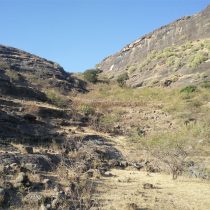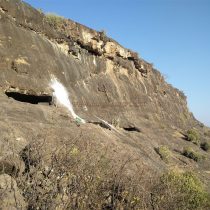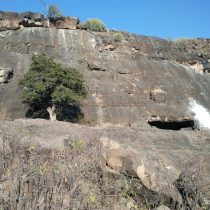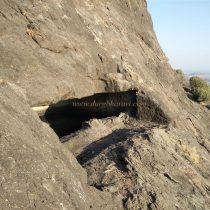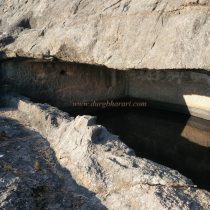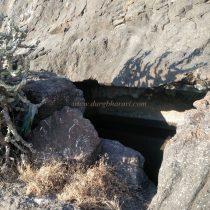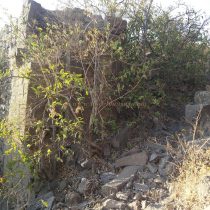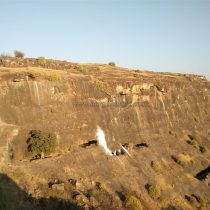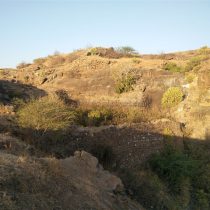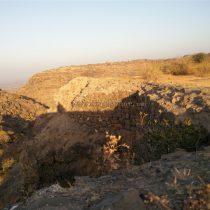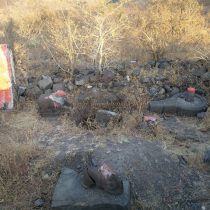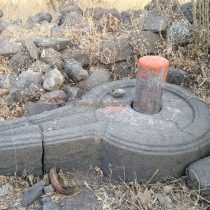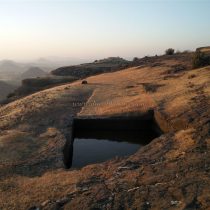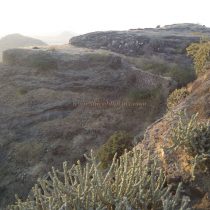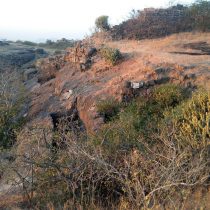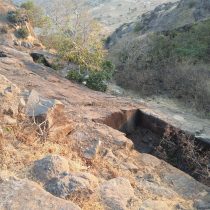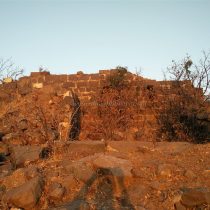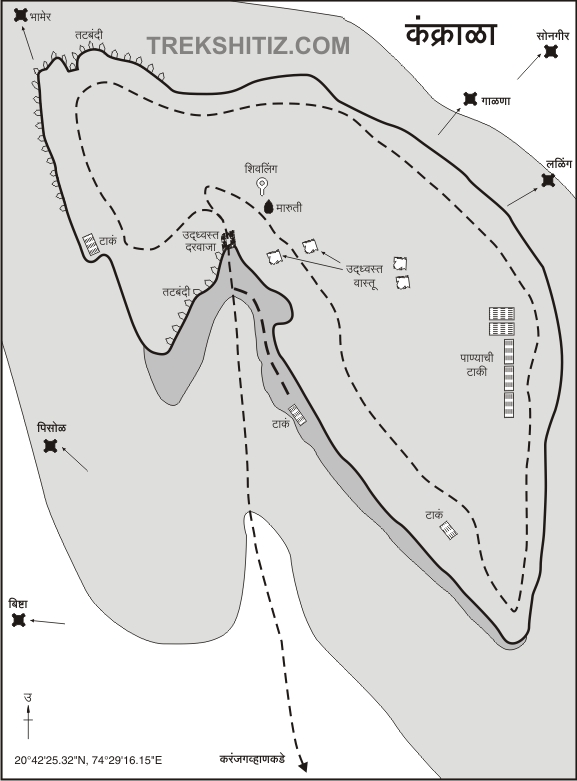KANKRALA
TYPE : HILL FORT
DISTRICT : NASHIK
HEIGHT : 2265 FEET
GRADE : MEDIUM
The high ranges of Selbari-Dolbari near Salher decrease in height as they extend eastwards, and to the north of Malegaon they appear as silt hills. The Kankrala fort stands on a similar hill separated from the main mountain range. Kankrala fort, known as the companion of Galana fort and is located in Malegaon taluka of Nashik district. The village of Kankrala is located at a distance of 20 km from Malegaon. To get there from Malegaon S.T. bus as well as a private vehicle available. If you are traveling in your private vehicle, you can see both Galna and Kankarala forts in one day. The distance from Ghalna to Kankarala via Karanjagavan is about 30 km. Kankrala village is located at the foothills of the fort at a distance of 10 km from Karanjagavan village. On the way from Kankarala village, there is an easy way to go up through the western side of the fort, while the other ways from the north through Garbad village is a bit difficult.
...
There is a beautiful view of the fort from Kankrala village. The fort is situated at an altitude of 2100 feet above sea level and about 500 feet from the base. If you have your private vehicle, you can take a dirt road to the base of the fort and save the walk of 4 km. At the base of the fort, there is a tribal settlement of five-six houses. There is a ravine in the middle of the fort due to the gravel hills. We should start walking towards the fort in the direction of white lime pasted on the rock towards the top of the hill. The road to the fort is not very clear but there shouldn’t be any chance of you getting lost. From this open field, we reach the base of Kankrala fort. It takes half an hour to reach the gorge from the settlement. As soon as you reach the pass, you come across a wall. The ramparts line the hill on the left, and a large circular bastion can be seen beside it. A gorge can be seen descending from the two hills at the top. This is the way to climb the fort. You have to climb through the stones that fell in this gorge. Most of the slope of the fort is steep and the climbing route has custard apple, pomegranate, and many thorny trees. Some caves are carved in the vertical cliffs on the right. These are five water cisterns that contained perennial water. The road to these cisterns is carved in the rock. There is a tamarind tree here and a saffron flag is fluttering above this tree. Nearby, the rock is painted with white lime. The villagers believe that this is the place of a Sufi saint. As the right and left side of the fort is slightly elevated, a hollow part has been formed between it. There is a stone wall built here. Moving on from here, you can see the remnants of the fortified entrance. To the right of the door are some cisterns carved into the rock. Some of these cisterns are dry and some are filled with mud. At the front of the cistern is a quadrangle structure, and above it are the remains of a mansion. Seeing the remains of the mansion, we should walk around the east side of the fort. Going up on the right side, you can see the shivling along with the idol of Hanuman and Nandi. shivling The fort should probably have a temple of Lord Shiva. Going down to the east side towards the edge of the valley, you can see 5 big drinking water cisterns carved in front but the water in the cisterns is not drinkable. Two of these cisterns are quite large. Going to the left, you can see the collapsed ramparts of the fort. Fort round should be continued in the same way and later you should return to the hollow part in the gorge. Now you should walk around looking at the ramparts around the hill on the left. There is no doubt that the fort's fortifications, bastions, water cisterns, remains of houses, etc., are all in good condition. After touring this plateau and approaching the gate, your fort round is complete. The Mosam River flows to the south of the fort and the Bori River flows from the north. To the north, a short distance beyond the Bori river is the Ghalna fort. One hour is enough to explore the entire fort. Kankrala is not mentioned anywhere in history. It is mentioned that in 1858, General Penny defeated the mad attacker Muslims who were trying to attack him. In 1862, the fort was demolished over time.
© Suresh Nimbalkar

